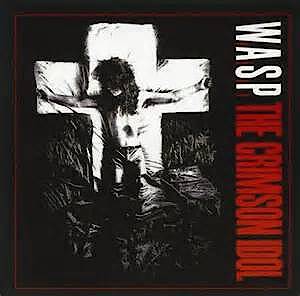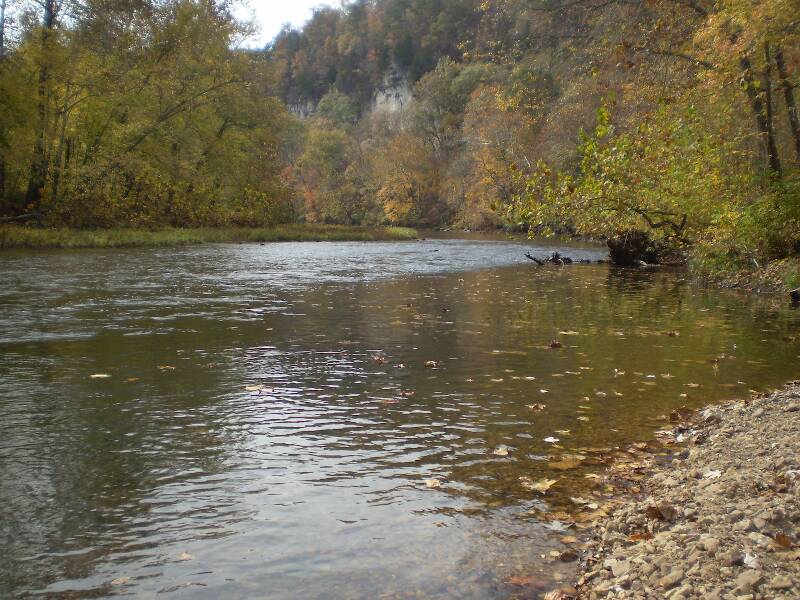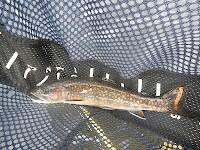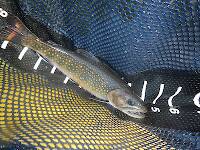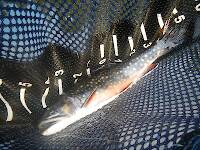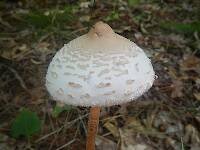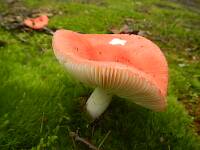
Salmonflies
Pteronarcys californica
The giant Salmonflies of the Western mountains are legendary for their proclivity to elicit consistent dry-fly action and ferocious strikes.
Featured on the forum

This one seems to lead to Couplet 35 of the Key to Genera of Perlodidae Nymphs and the genus Isoperla, but I'm skeptical that's correct based on the general look. I need to get it under the microscope to review several choices in the key, and it'll probably end up a different Perlodidae.

Troutnut is a project started in 2003 by salmonid ecologist Jason "Troutnut" Neuswanger to help anglers and
fly tyers unabashedly embrace the entomological side of the sport. Learn more about Troutnut or
support the project for an enhanced experience here.
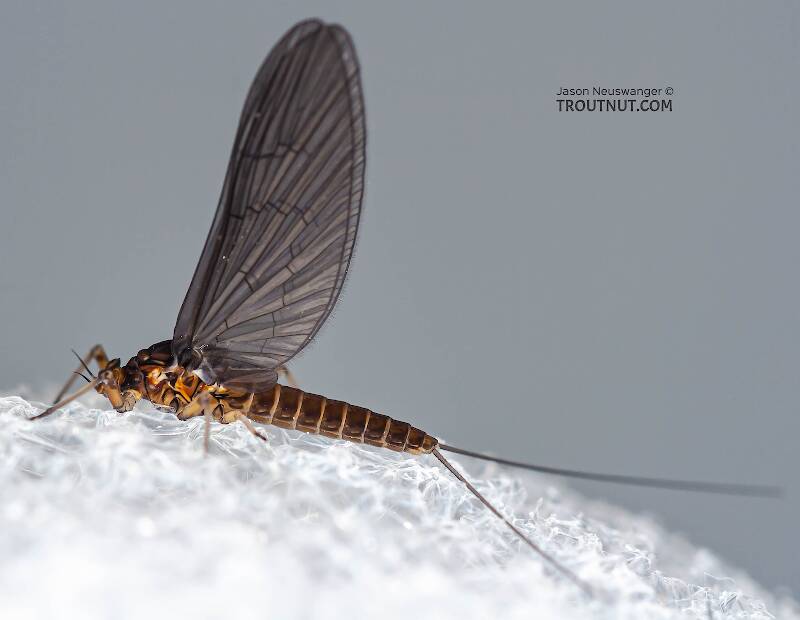
This little early-season dun molted into this spinner after I photographed her.
Adirman on Sep 10, 2010September 10th, 2010, 3:10 am EDT
I was just going through some pics on the site and looking at Baetis, it really doesn't look much like a true BWO does it? I think a more effective dry pattern for these would be something more along the lines of like a March Brown or something, maybe a royal Wulff?
Taxon on Sep 10, 2010September 10th, 2010, 4:47 am EDT
Adirman,
There really isn't any such thing as a "true" BWO. That's why it's much more effective when communicating about mayflies to use scientific names rather that common names, which can vary depending on the region (or even the stream/river) you happen to be fishing.
There really isn't any such thing as a "true" BWO. That's why it's much more effective when communicating about mayflies to use scientific names rather that common names, which can vary depending on the region (or even the stream/river) you happen to be fishing.
Adirman on Sep 10, 2010September 10th, 2010, 5:51 am EDT
Yes, I see what you 're saying. Been doing some reading and lookin at pics to familiarize myself w/ the mayflies and I see that there's quite a bit of variation. Best thing maybe is to get a general impression as to what your bug's id is if you're fishing and match it color/size that way w/o worrying as much about names and labels of bugs and fly patterns. Another thing, I looked over the pics of the Iso's and I think they look pretty similar to Hendrickson and could see a novice like myself misidentifying. You think?
Motrout on Sep 10, 2010September 10th, 2010, 6:32 am EDT
"That's why it's much more effective when communicating about mayflies to use scientific names rather that common names."
I see what you're saying, but the word Blue Winged Olive just has a better ring to it than Baetis...
I see what you're saying, but the word Blue Winged Olive just has a better ring to it than Baetis...
"I don't know what fly fishing teaches us, but I think it's something we need to know."-John Gierach
http://fishingintheozarks.blogspot.com/
http://fishingintheozarks.blogspot.com/
Taxon on Sep 10, 2010September 10th, 2010, 8:00 am EDT
Motrout-
Perhaps, but please consider the following list of mayflies which are referred to by that very name in flyfishing literature:
Acentrella turbida
Attenella attenuata
Attenella margarita
Baetis bicaudatus
Baetis brunneicolor
Baetis flavistriga
Baetis tricaudatus
Centroptilum spp.
Cloeon dipterum
Dannella lita
Dannella simplex
Drunella flavilinea
Drunella lata
Drunella cornuta
Drunella cornutella
Drunella walkeri
Ephemerella dorothea
Ephemerella excrucians
Heterocloeon anoka
Plauditus dubius
Plauditus futilis
Plauditus punctiventris
Procloeon ingens
Procloeon simile
I see what you're saying, but the word Blue Winged Olive just has a better ring to it than Baetis...
Perhaps, but please consider the following list of mayflies which are referred to by that very name in flyfishing literature:
Acentrella turbida
Attenella attenuata
Attenella margarita
Baetis bicaudatus
Baetis brunneicolor
Baetis flavistriga
Baetis tricaudatus
Centroptilum spp.
Cloeon dipterum
Dannella lita
Dannella simplex
Drunella flavilinea
Drunella lata
Drunella cornuta
Drunella cornutella
Drunella walkeri
Ephemerella dorothea
Ephemerella excrucians
Heterocloeon anoka
Plauditus dubius
Plauditus futilis
Plauditus punctiventris
Procloeon ingens
Procloeon simile
Motrout on Sep 10, 2010September 10th, 2010, 9:28 am EDT
You mean the #18, #20,and #22? :)
I'm mostly just kidding you, but I'll admit that I'm a sucker for the "traditional" names of the bugs... You know, Blue-winged Olives, Pale Morning Duns, and March Browns instead of the technical sounding Latin names.
I'm mostly just kidding you, but I'll admit that I'm a sucker for the "traditional" names of the bugs... You know, Blue-winged Olives, Pale Morning Duns, and March Browns instead of the technical sounding Latin names.
"I don't know what fly fishing teaches us, but I think it's something we need to know."-John Gierach
http://fishingintheozarks.blogspot.com/
http://fishingintheozarks.blogspot.com/
Jmd123 on Sep 11, 2010September 11th, 2010, 10:27 am EDT
Folks, the above-mentioned list is exactly why we scientific types use the Latin names instead of the "local" or "traditional" ones. For instance, look up all the common names for Poxomis nigromaculatus, a.k.a.:
Black crappie
Calico bass
Papermouth
etc. etc. etc.....
Jonathon
P.S. I do call them black crappie when I am catching them, though (on chartreuse Woolly Buggers, Killer Bass Flies, and even dries in the spring when they are feeding on midges [Chironomidae and/or others])...
Black crappie
Calico bass
Papermouth
etc. etc. etc.....
Jonathon
P.S. I do call them black crappie when I am catching them, though (on chartreuse Woolly Buggers, Killer Bass Flies, and even dries in the spring when they are feeding on midges [Chironomidae and/or others])...
No matter how big the one you just caught is, there's always a bigger one out there somewhere...
Jmd123 on Sep 11, 2010September 11th, 2010, 10:29 am EDT
P.S. I used an Adams recently to imitate an Isonychia, and a 13" smallie was thoroughly convinced (photo of said fish is posted elsewhere by Spence, a.k.a. Oldredbarn)...
JMD
JMD
No matter how big the one you just caught is, there's always a bigger one out there somewhere...
Martinlf on Sep 12, 2010September 12th, 2010, 9:35 am EDT
Some, like me, may walk a middle line. I try hard to know exactly what bug I'm dealing with, because the habits of one "sulphur," such as a Ephemerella dorthea may differ somewhat from another, such as an Ephemerella invaria, or widely from a bug that appears to be very similar, such as Heptegenia Lecrocuta. I may tell someone I'm fishing sulphurs in reference to any one of these, especially if I don't know which one I'm dealing with, or if my listener is apt to be put off by Latin. Or I may throw Latin at someone just to mess with them. I'll often use the term "olives" to describe any bug that falls into the many Geni and Species that term is linked with. Even so, it sometimes helps me to know, as exactly as I can, which bug it is, since knowing this may help me understand hatching behavior. I'm delighted that some of my "olives" are orange, and that some are more grey than olive. The term "olive" for me is just a bit of quick and dirty shorthand, useful at times--not so useful at others.
"He spread them a yard and a half. 'And every one that got away is this big.'"
--Fred Chappell
--Fred Chappell
Shawnny3 on Sep 12, 2010September 12th, 2010, 12:45 pm EDT
Or I may throw Latin at someone just to mess with them.
You wouldn't really do that, would you, Louis? And here I thought you were a gentleman...
-Shawn
Jewelry-Quality Artistic Salmon Flies, by Shawn Davis
www.davisflydesigns.com
www.davisflydesigns.com
Martinlf on Sep 12, 2010September 12th, 2010, 3:31 pm EDT
Looks can be deceiving, Shawn.
"He spread them a yard and a half. 'And every one that got away is this big.'"
--Fred Chappell
--Fred Chappell
Quick Reply
Related Discussions
Topic
Replies
Last Reply
1
Apr 18, 2007
by Troutnut
by Troutnut
8
Sep 23, 2018
by Jmd123
by Jmd123
12
Apr 11, 2007
by Taxon
by Taxon
6
Oct 31, 2009
by Taxon
by Taxon


